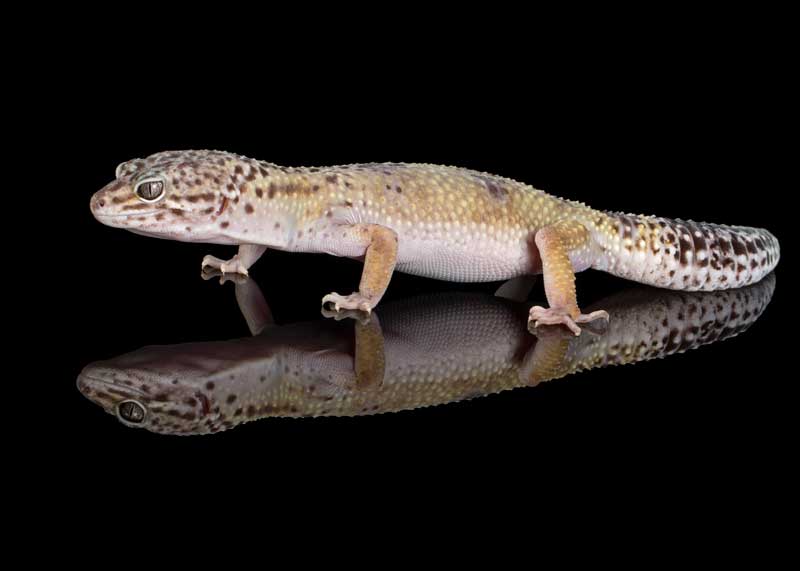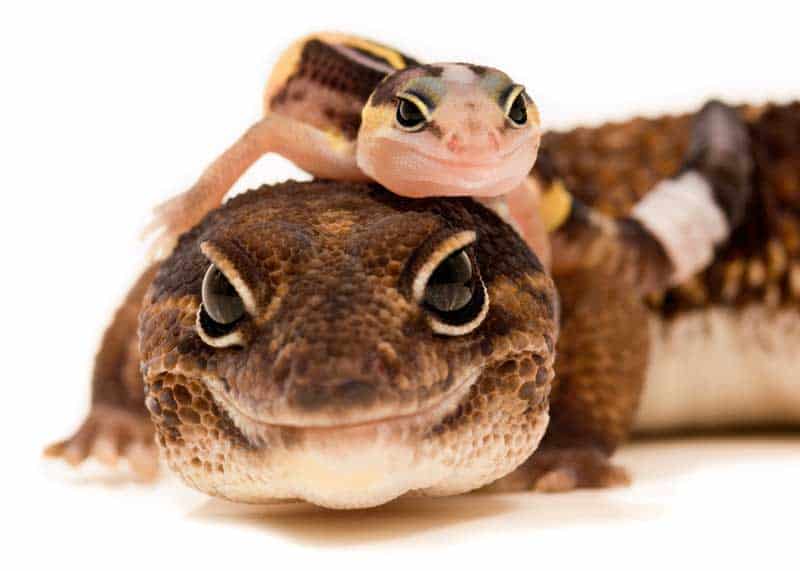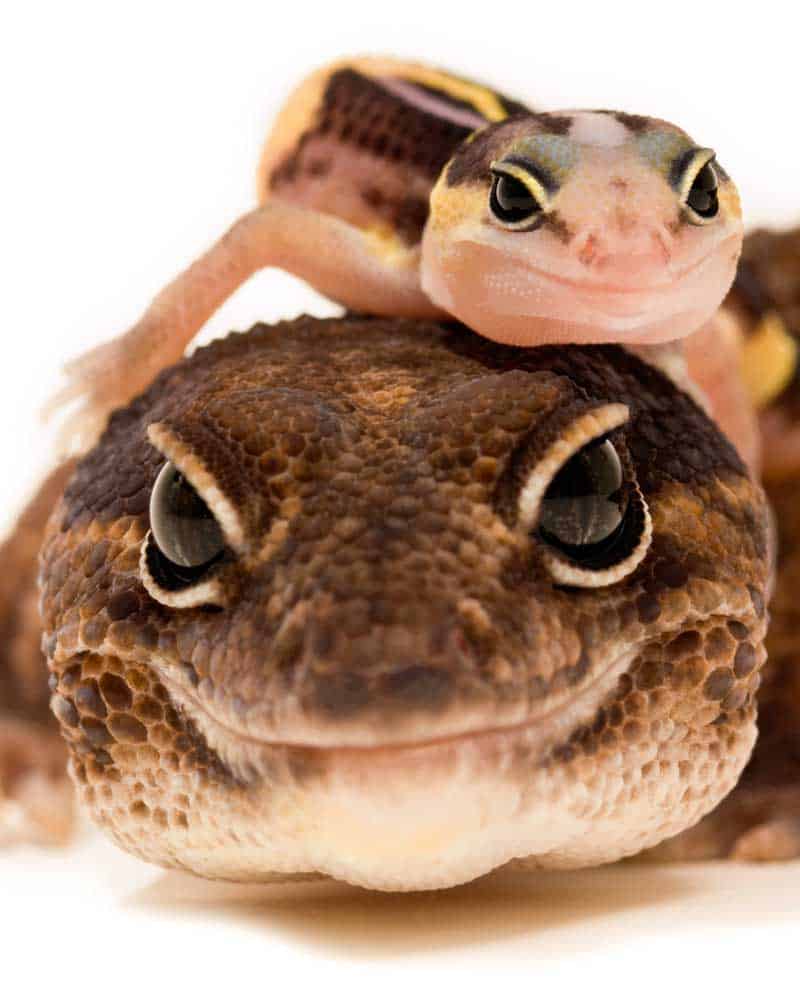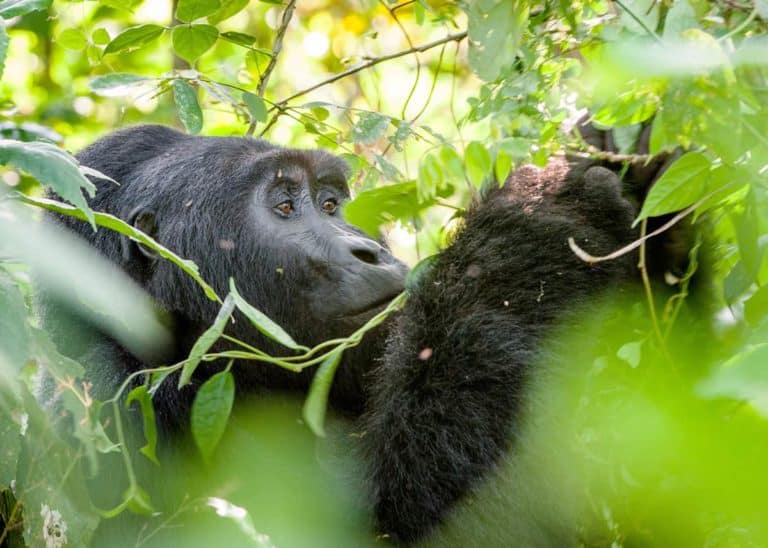18 Facts About African Fat-Tailed Geckos (Hemitheconyx caudicinctus)
Have you ever wondered about African fat-tailed geckos? In this article, you’ll learn some really cool facts about these little creatures, like what they look like, where they live, what they eat, and so on. You’ll also learn an interesting fact about their feet!

African Fat-Tailed Gecko Overview
- Latin Name: Hemitheconyx caudicinctus
- Location: West Africa to Central Africa (Northern Cameroon)
- Habitat: savannah habitat (wet or dry), dry Sahel habitat, dark humid hiding places
- Population Status: Least Concern
- Length: around 7 to 9 inches (18 to 23 cm), males slightly bigger than females
- Weight: 1.76 to 2.82 ounces (50 to 80 grams)
- Diet: live insects
- Physical Features: moveable eyelids to keep out dust, no adhesive lamellae (sticky feet), vertical pupils, brown coloring with beige stripes, sometimes white stripe on back, pale pink or off-white underbelly
- LIfespan: 10 to 15 years (wild),
1. What is the scientific classification of an African fat-tailed gecko?
- Kingdom: Animalia
- Phylum: Chordata
- Class: Reptilia
- Order: Squamata
- Family: Eublepharidae
- Genus: Hemitheconyx
- Species: Hemitheconyx caudicinctus
2. What do African fat-tailed geckos look like?
African fat-tailed geckos are generally brown in color, with beige or tan stripes/banding on their backs.
Sometimes they have a thin white stripe on their back as well. When it comes to their underbellies, these geckos are pale pink or off-white in color.
An interesting feature they have is that African fat-tailed geckos have eyelids they can blink, which most other geckos don’t have.
This is key for their habitat, as it helps keeps sand and dust out of their eyes.

3. How big do African fat-tailed geckos get?
African fat-tailed geckos are relatively small lizards, getting up to 9 inches (23 cm) in length.
And adult fat-tailed geckos weigh about 2.82 ounces (80 grams).
4. Five differences between male and female fat-tailed geckos
Some key differences between males and females are:
- Males are slightly bigger than females overall
- Swelling at the base of a male’s tale, due to his reproductive organs called hemipenes
- Males have fatter tails
- Males have broader heads
- Males have obvious pores located underneath their legs.
5. What’s special about the African fat-tailed geckos tail?
Since it’s in their name, we should probably talk about the African fat-tailed geckos, um, well, tail.
Like some other geckos, the African fat-tailed geckos can lose their tail voluntarily if they feel like they’re in danger.
When the tail does grow back, it may come back rounder than before in order to look like its head, possibly tricking predators into going for that instead of its actual head. The tail may not grow back to match the color and pattern of the rest of the body.
Even more interesting is the size of their tail, as their name suggests. The tail stores fat, which is used for energy.
Because it’s so big, an African fat-tailed gecko can go days without food.
You can also check the overall health of the gecko by means of the health of its tail. The rounder it is, the more food it has access to.
6. Can African fat-tailed geckos climb?
African-fat-tailed geckos actually have difficulty climbing. This may be surprising to you, as it’s often said that geckos have the ability to climb anything except Teflon.
This is because fat-tailed geckos don’t have so-called “sticky feet”, or adhesive lamellae.
7. What do African fat-tailed geckos eat?
African fat-tailed geckos primarily eat insects (insectivorous). They like to eat insects like roaches, crickets, and different types of worms (especially mealworms).
When they’re looking for food, fat-tailed geckos may use their tail for the hunt.
They’ll lift their tail up and wave it, which some believe is meant to either distract their prey and make them easier to catch or distract predators when the geckos’ focus is on food and not on protecting themselves.
8. Where do African fat-tailed geckos live?
You can find wild African fat-tailed geckos in West Africa, in countries like Nigeria and Senegal.
They can also be found in a small part of Central Africa, like the northern part of Cameroon.
9. What is the habitat of an African fat-tailed gecko?
African fat-tailed geckos can live in such habitat areas as dry parts of the Sahel (where the environment shifts from the Sahara desert to the Sudanian savannah).
They can also be found in wet or dry savannahs and rocky woodlands.
Within that, fat-tailed geckos can be found in dark, humid places most of the time. In fact, they may be found in burrows that aren’t lived in by any other creature.
They’re terrestrial, meaning they can mainly be found living on the ground.
African fat-tailed geckos are nocturnal, preferring to hide in their living areas during the day.
They’re also loners, as they like to spend time by themselves unless they have to breed. This also leads them to be territorial and aggressive towards other geckos at times
Learn more about the largest deserts in the world.
10. When is the breeding season of the African fat-tailed gecko?
Breeding season for African fat-tailed geckos starts in November, then goes into March.
During this time, females can lay up to five batches, known as clutches, of eggs depending on how many males mate with them. Each clutch range from 1-3 eggs.
Male fat-tailed geckos will compete against each other for females.
Both male and female African fat-tailed geckos have multiple partners during mating season. This is known as being polygynandrous.
11. What are some predators of African fat-tailed geckos?
African fat-tailed geckos have several known predators, namely snakes, bigger reptiles (like monitor lizards), and different birds and mammals.
As mentioned, they can purposely lose their tails to avoid predators.
12. Are African fat-tailed geckos venomous or poisonous?
No, African fat-tailed geckos are neither poisonous nor venomous. That means that you can pick them up (poisonous) without fear, or get bitten by them (venomous) with little worry.
Though it is recommended to wash your hands should you handle them or be bitten by them (which is basic hygiene).
13. What sounds do African fat-tailed geckos make?
Male African fat-tailed geckos can make several vocalizations.
They may use squeaks or clicks, either during disputes over territory, when warning off other males, or when trying to attract females.

14. Do African fat-tailed geckos bite?
African fat-tailed geckos are not likely to scratch or bite unless they feel VERY threatened, despite being aggressive and territorial at times.
In fact, they are for the most part docile and can be handled.
15. Are African fat-tailed geckos endangered?
No, African fat-tailed geckos are not endangered. They are classified as of “Least Concern”.
16. How long do African fat-tailed geckos live?
African fat-tailed geckos can live from 10-15 years in the wild and may live up to 20 years in captivity.
17. Can you keep African fat-tailed geckos as pets?
Because they’re mostly docile and allow themselves to be handled, you can keep African fat-tailed geckos as pets. In fact, they’re good for beginners looking to have a reptile as a pet.
One warning though: if two males are put in the same enclosure, they can get aggressive towards each other. (Best to avoid that scenario.)
Here are some tips for setting up your cage for African fat-tailed geckos.
18. African Fat-Tailed Geckos vs Leopard Geckos
Here’s a nice comparison between these two popular pets: African fat-tailed geckos and leopard geckos.
Their body shape and structure are similar but have some notable differences.
You might also enjoy: Which Land Animal Has the Longest Tail?
Your Turn!
What do you think about the African fat-tailed gecko? What did we miss? Let us know in the comments below!






